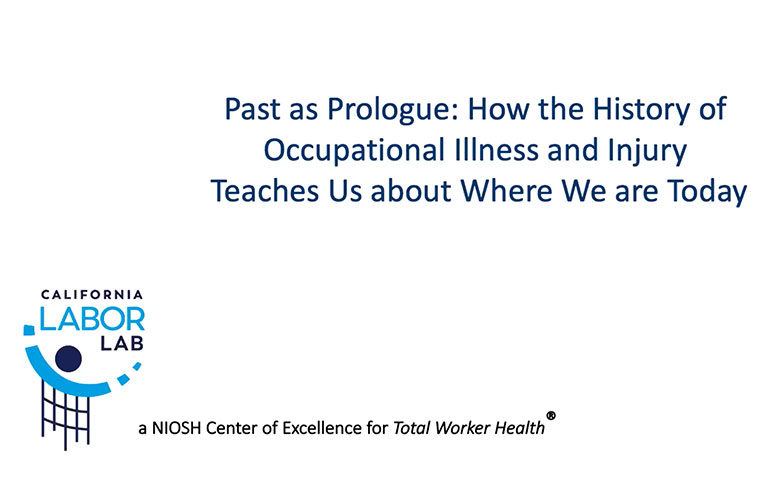Learn from history to avoid reemergence of work-related illnesses, longtime researcher says

Source: Center for Occupational and Environmental Health at the University of California
San Francisco — Almost 40 years of studying occupational and environmental medicine has steered Paul Blanc to a number of discoveries. One in particular stands out.
“There is a kind of cyclical amnesia that occurs in our field where an exposure is identified, the disease connection is made, there’s a little bit of noise about it, and then 10 or 20 years later it seems like it’s completely forgotten. And then somebody else comes along and reports what might very well be the same thing.”
Blanc, the endowed chair in occupational and environmental medicine at University of California, San Francisco, made his remarks about the perils of reemerging hazards during a recent webinar hosted by the Center for Occupational and Environmental Health at UC, Berkeley. He pointed to the resurgence of silicosis from exposure to silica dust, which workers can inhale while cutting, sawing, drilling or crushing materials such as concrete, brick, ceramic tiles, rock and stone. Another example: the flavoring chemical diacetyl, with Blanc stating there were other cases of workplace exposure “that were probably not appreciated” before a recent, higher-profile outbreak of lung disease among microwave popcorn manufacturers.
Noting that “changing technology leads to changing patterns of disease,” Blanc also explored the histories of multiple 19th and 20th century technologies that spurred occupational or environmental disease. The advent of pneumatic drilling, Blanc noted, triggered an outbreak of silicosis in mines and quarries “because the dust was being generated so efficiently.” This represented “an old disease with a rebirth from this technology.”
Blanc also said that “asbestos had never really been used commercially” until the early 20th century. Its introduction, however, soon led to the detection of cases of mesothelioma, a cancer that occurs in the thin layer of tissue lining the lungs and other organs and remains a widespread concern in various industries.
Asked how prevention might catch up with the implementation of new science and technology, Blanc responded that he’s an advocate for incremental decision-making. “I think you just have to try to do what you do.”
Still, he added, one way to improve current action is to study the approaches of the past.
“It’s not simply to ask what history teaches us, but how it teaches us, so that we can gain insights from that ‘how’ and become more alert to the warning signs of newly emerging, novel hazards, … newly emerging ways of working and working relationships. And reemerging, long-established hazards as well. So, it’s not just the new. It’s the return of the old.”
Post a comment to this article
Safety+Health welcomes comments that promote respectful dialogue. Please stay on topic. Comments that contain personal attacks, profanity or abusive language – or those aggressively promoting products or services – will be removed. We reserve the right to determine which comments violate our comment policy. (Anonymous comments are welcome; merely skip the “name” field in the comment box. An email address is required but will not be included with your comment.)

